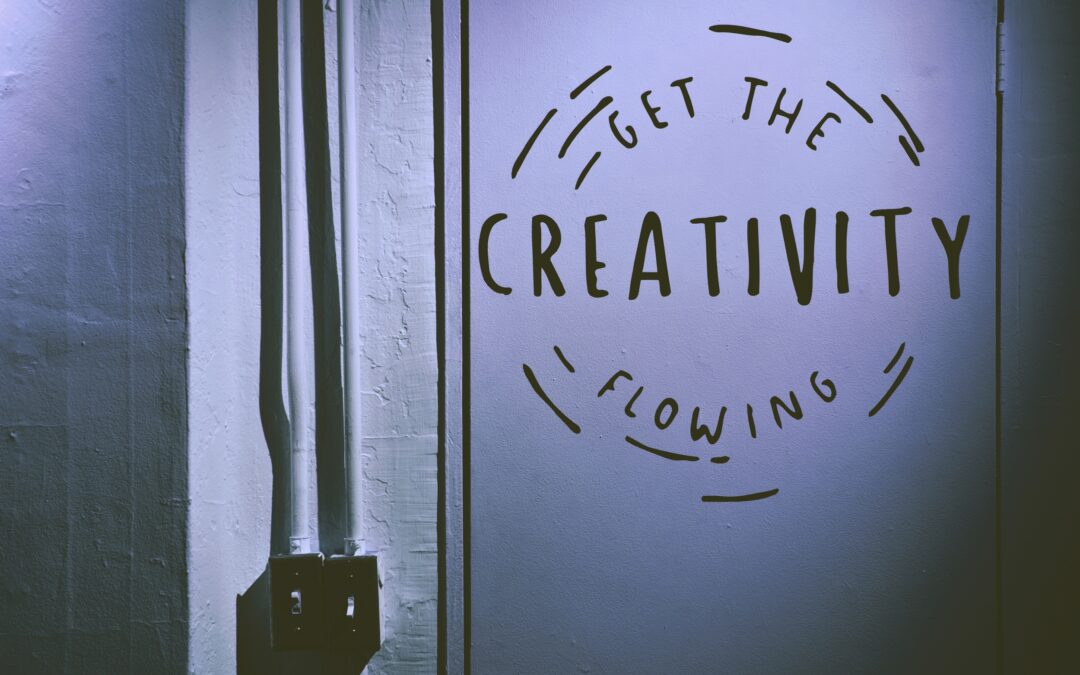
by Robyn Bolton | Feb 27, 2024 | Customer Centricity, Tips, Tricks, & Tools
Unintended consequences often catch us off guard despite their predictability. The moment they occur, we gasp in shock, shake our heads, and look at each other in wide-eyed horror at this thing that just happened that we could never ever ever have anticipated.
Yet, when (if) we do an After-Action Review, we often realize that these consequences were not entirely unforeseeable. In fact, had we anticipated them, we might have made different decisions.
The Unintended Consequences of Spreadsheets
In 1800 BCE, ancient Babylonians started recording data by scratching grids and columns onto clay tablets, and the spreadsheet was born. Over the millennia, we went from clay tablets to papyrus to parchment and then paper.
Fast forward to 1963 when R. Brian Walsh of Marquette University ported the Business Computer Language (BCL) program to an IBM 7040, and electronic spreadsheets became a reality. The introduction of VisiCalc by Apple in 1979 revolutionized spreadsheet capabilities, followed by Lotus 123 and Microsoft Excel. Today, spreadsheets are ubiquitous in education, business operations, financial markets, budgeting, and even personal inventories.
Unintended yet predictable consequences
While spreadsheets have undoubtedly enhanced efficiency and accuracy compared to traditional methods like clay tablets or hand-drawn tables on parchment, their ease of use has inadvertently led to complacency.
We stopped engaging in a multi-millennial habit of discussing, debating, and deciding before making a spreadsheet. We started flippantly asking people to create spreadsheets and providing little, if any, guidance because “it’s easy to make changes and run scenarios.”
This shift resulted in a reliance on automated models and a lack of shared assumptions or analytical rigor in decision-making processes.
Of course, these behaviors were never intended. They were, however, very predictable.
Research spanning disciplines as varied as network scientists, anthropology, neuropsychology, and paleontology shines a light on how truly predictable we are.
Here are some examples:
Emotions before Reason: Ask someone if they make decisions based on their motivations, aspirations, and fears and use data to justify the decisions, and they’ll tell you no. Ask them the last time someone else made a decision that “made no sense,” and you’ll listen to a long list of examples.
Small gains now are better than big gains later: Thoughtfully planning before using solutions like spreadsheets, word processing, email, and instant messaging could save us time at work and help us get home 30 minutes earlier or work a few hours less on the weekend. But saving a few seconds now by brain-dumping into Word, setting up a “flexible” spreadsheet, and firing off a text feels much better.
Confidence > Realism: We’ve all been in meetings where the loudest voice or the most senior person’s opinion carried the day. As we follow their lead, we ignore signs that we’re wrong and explain away unexpected and foreboding outcomes until we either wake up to our mistakes or adjust to our new circumstances.
Predict the 93%. Create for the 7%
Acknowledging the predictability of human behavior is not an endorsement of stereotypes but a recognition of our innate cognitive processes. By incorporating this understanding into design, innovation, and decision-making processes, we better anticipate potential outcomes and mitigate unintended consequences.
While 93% of human behavior may follow predictable patterns rooted in evolutionary instincts, focusing on the remaining 7% allows for the exploration of unique behaviors and novel solutions. By embracing both aspects of human nature, we can navigate challenges more effectively and anticipate a broader range of outcomes in our endeavors, leading to informed decision-making and value creation.
Now, if I could only get Excel to stop auto-converting numbers into date/time format.

by Robyn Bolton | Jan 31, 2024 | Customer Centricity, Innovation, Tips, Tricks, & Tools
Most customer research efforts waste time and money because they don’t produce insights that fuel innovation. Well-meaning businesspeople say they want to “learn what customers want,” yet they ask questions better suited to confirming their own ideas or settling internal debates. Meanwhile, eager consumers dutifully provide answers despite the nagging belief that they’re being asked the wrong questions.
It doesn’t have to be this way. In fact, you can get profound revelations into consumers’ psyche, motivations, and behaviors if you do one thing – channel your inner Elmo.
First, a confession
I find Elmo deeply annoying. I grew up watching Sesame Street, and I still get an astounding amount of joy watching Big Bird, Mr. Snuffleupagus, Cookie Monster, Bert and Ernie, Grover, and Oscar the Grouch (especially when Oscar channels his inner Taylor Swift).
Elmo moved to Sesame Street in 1985, and it hasn’t been the same since. He’s designed to reflect the mental, emotional, and intellectual capabilities of a 3.5-year-old, and, in that aspect, his creators were wildly successful. I fully acknowledge that Elmo plays a vital role in the mission of Sesame Street and that people of all ages love Elmo. But Elmo makes my ears bleed, and I will never be ok with the fact that Elmo refers to himself in the third person.
This is why my recommendation to channel your inner Elmo is shocking and extremely serious.
Next, an explanation
On Monday, Elmo posted on X (yes, the minimum age limit is 13, but his mom and dad help him run the account, so it’s apparently okay), “Elmo is just checking in! How is everybody doing?”
180 million views, 120,000 likes, and 13,000 comments later, it was clear that no one was okay.
And lest you think this was Gen Z trauma dumping on their ol’ pal Elmo, Dionne Warwick, T-Pain, and Today Show anchor Craig Melvin responded with their struggles. Comments ranged from, “Mondays are hard” to “Elmo I’m gonna be real I am at my f—ing limit,’ to “Elmo each day the abyss we stare into grows a unique horror. one that was previously unfathomable in nature. our inevitable doom which once accelerated in years, or months, now accelerates in hours, even minutes. however I did have a good grapefruit earlier, thank you for asking.”
Wow. Thank goodness for that grapefruit.
There are a lot of theories about why Elmo’s post touched a nerve – it’s January and we’re tired, it’s easier to share our struggles online than in person, or we still enjoy “that wholesome and sincere bond from childhood that makes us want to share.”
I’m sure all those are true, and I think it’s something more, something we can all learn and do.
Now, the secret
Elmo may be a red, hairy, 3.5-year-old muppet. Still, he nailed the behaviors required to get people to open up and share their inner worlds – the very thoughts, beliefs, and motivations that enable others to create and offer impactful and innovative solutions.
Here’s what Elmo did (and you should, too):
- Show that you’re genuinely curious: Elmo didn’t open with the standard “How are you?” that if answered with anything other than the socially acceptable “Fine,” results in awkward silence and inner panic. Elmo opened by declaring his intent – checking in – and then asked a question. Because of that, we understood his motivation was genuine, and he wanted an honest answer.
- Ask open-ended questions: Elmo didn’t ask a closed question that can be answered with yes or no. He asked a question that allowed people to share as much or as little as they wanted and that could act as a springboard to a deeper conversation.
- Listen silently and without judgment: Elmo didn’t follow up his original tweet with options like “Are you doing ok, or not ok, or are you happy, or sad, or mad, or…” Elmo asked a question and then listened (read the responses) without jumping back into the conversation or firing off follow-up questions.
- Acknowledge and thank the person sharing: On Tuesday, Elmo responded but not by skipping off to the next scheduled post. He acknowledged the response by opening with, “Wow! Elmo is glad he asked!” He didn’t share his opinion or immediately ask another question. Instead, he thanked people for sharing, acknowledged that he heard their responses, and was grateful.
- Do something with what was shared: Even if you do #4, it’s tempting to move on to the next question. Don’t. Elmo didn’t. Instead, he wrote that he “learned that it is important to ask a friend how they are doing.” He also wrote that he “will check in again soon, friends! Elmo loves you.” You don’t have to profess your love but do respond with what you learned and what it makes you wonder.
People can’t tell you what to create because they don’t know what you know. But they can tell you the problems they have. If you’re willing to listen (just don’t talk about yourself in the third person, you’re not a muppet).

by Robyn Bolton | Oct 11, 2022 | Customer Centricity, Innovation, Tips, Tricks, & Tools
Q: How might we brainstorm new ideas to serve our customers better?
A: Have a brainstorming session that starts with “How Might We help customers [Job to be Done/problem]?”
If only it were that simple.
How Might We (HMW) is an incredible tool (not BS, as some would assert), but we misuse it. We focus too much on the “we” and not enough on the “might.”
Might > We
HMW was first used to prompt people to be “wildly creative while simultaneously leveraging [company’s] innate strengths.”
IDEO popularized the prompt as a way to solve “wicked problems” – problems so complex that there is no right or wrong answer.
In both of these cases, the assumption was that the word “might” would free people from the shackles of today’s thinking and constraints and give people permission to dream without fear of judgment and reality.
“We” kept ideas tethered to the reality of the company’s “innate strengths,” providing a modicum of comfort to executives worried that the session wouldn’t result in anything useful and would, therefore, be a waste of time.
We > Might
Alas, as time went on and HMW became more popular, we lost sight of its intent (prompt wildly creative thinking about wicked problems) and twisted it to our purposes.
- We end the HMW sentence with our problems (e.g., HMW cut costs by getting more customers to use self-service tools?).
- We use it to brainstorm solutions to things that aren’t even problems (e.g., HMW eliminate all customer service options that aren’t self-serve?)
- We mentally replace “might” with “will” so we can emerge from brainstorming sessions with a tactical implementation plan.
How Might Can YOU Fix HMW?
If you’re not getting creative, radical, or unexpected ideas from your brainstorming sessions, you have an HMW problem.
As a result, continuing to use HMW as a tool to prompt creative, radical, or unexpected ideas is the definition of insanity. And you are not insane,
Instead, mix it up.
Use different words to articulate the original intent of HMW.
How would we solve this problem if the answer to every request is YES?
Innovation thrives within constraints. Brainstorming doesn’t.
Even when you tell people not to constrain themselves, even implore them to value “quantity over quality,” you still get more “safe” ideas rather than more “crazy” ideas.
Do more than tell. Make a world without constraints real. Explicitly remove all the constraints people throw at ideas by creating a world of infinite money, people, capabilities, willingness, appetite for risk, and executive support. Doing this removes the dreaded “but” because there is no “but we don’t have the money/people/capabilities” or “but management will never go for it” and creates space for “and.”
What would we ask for if we were guaranteed a YES to only ONE request?
This question is often asked at the end of a brainstorm to prioritize ideas. But it’s equally helpful to ask it at the beginning.
This question shifts our mindset from “the bosses will never say yes, so I won’t even mention it” to “the bosses will say yes to only one thing, so it better be great!” It pulls people off the sidelines and reveals what people believe to be the most critical element of a solution. It drives passionate engagement amongst the whole team and acts as a springboard to the next brainstorm – How Might We use (what they said yes to) to solve (customers’ Jobs to be Done/problem)?
How would we solve the problem if the answer to every request is NO?
This one is a bit risky.
Some people will throw their hands in the air, declare the exercise a waste of time and effort, and collapse into a demotivated blob of resignation.
Some people will feel free. As Seth Godin wrote about a journal that promises to reject every single person who submits an article, “The absurdity of it is the point. Submitting to them feels effortless and without a lot of drama, because you know you’re going to get rejected. So instead of becoming attached to the outcome, you can simply focus on the work.”
For others, this will summon their inner rebel, the part of themselves that wants to stick it to the man, prove the doubters wrong, and unleash a great “I told you so” upon the world. To them, “No” is the start of the conversation, not the end. It fires them up to do their best work.
Don’t invite the first group of people to the brainstorm.
Definitely invite the other two groups.
How Might Will/Do YOU Fix HMW?
If you want something different, you need to do something different.
Start your next brainstorm with a new variation on the old HMW prompt.
How do people react? Does it lead to more creative or more “safe” ideas?
How might we adjust to do even better next time?

by Robyn Bolton | Aug 26, 2020 | Customer Centricity, Tips, Tricks, & Tools
“When you say, ‘uh-huh’ over and over like that, I can tell you’re not listening to me.”
Me, age 7, to my mom
It doesn’t take a lot of experience to know when someone isn’t listening. From a young age, we can tell when someone is listening and when they’re simply responding.
When we’re with the person, we notice the lack of eye contact or the blankness in their eyes showing us where their thoughts are actually at. When we’re on the phone, we hear the repetitive and monotone mumbles that tell us they’re attention is elsewhere.
Yet often, what we want most is simply to be listened to.
This is true in our personal relationships and in our relationships with the businesses and organizations we support. We want people and businesses to listen to our opinions, to understand them, and to thoughtfully respond to them.
Instead, people and businesses simply “hear” us.
There’s a big difference between listening and hearing
According to the Oxford University Press, hearing is “the faculty of perceiving sounds” while listening is “give one’s attention to a sound” and “take notice of and act on what someone says.”
As I explain to my clients, surveys, focus groups, and even in-depth qualitative research is often a Hearing exercise – the company develops a list of questions, asks their customers to answer the questions, then tabulates the answers and passes them along to whoever needs them.
This is a transaction. An exchange of information. It is not listening.
Listening requires engagement. It happens during EPIC conversations, those typified by empathy, perspective, insights, and connection.
Listening accelerates innovation and drives transformation. When we’re listening, we’re learning new information and discovering new insights, which enables companies to create and act differently, differentiating themselves from the competition and ultimately gaining an advantage.
Listening takes practice but here are 5 simple steps to help you get started:
- Drop the agenda – Before you have a conversation within someone, identify the 1-3 things you need to learn and leave space for at least 1 surprise. If you go into a conversation with an agenda or a long list of questions, you’re only going to hear what you want to hear because your mind is primed to seek confirmation for your opinions and to reject anything counter to what you’re hoping to hear.
- Follow where they lead – During the conversation, don’t worry about trying to steer the conversation or “keep things on track.” If you only need to learn 3 things in the conversation and you have 30 minutes or an hour, you have plenty of time for tangents, stories, and random connections. This is where the surprises and the insights come from.
- Ask Why – Channel your inner two-year-old (or Toyota Production employee) and ask “Why” multiple times. When you ask “Why” you get personal, surprising answers that point to the motivations behind people’s choices and actions. When you ask “What” you get rational, expected, even obvious answers that you, and your competitors, have heard before.
- Say as little as possible – Follow the 80/20 rule and spend 80% of your time listening. When you ask a question, don’t go into a long pre-amble about why you’re asking it or follow it with a long list of options or examples. Simply ask the question and the answer will come.
- Let the silence work for you – After you ask a question, start counting silently in your head. Before you get to 8, the person you’re listening to will start talking. Silence makes people uncomfortable but it’s also when the brain goes into exploration and discovery mode. And the longer the silence goes on, the faster the brain works to come up with something to fill it. So, stay quiet and let the brain work!
Whether you’re talking to a customer, a colleague, or a friend, you’re talking to someone who wants you to listen, to hear and understand what they are saying. These 5 tips will help you do that and, if done well, discover something wonderful and unexpected with the power to transform.
Originally published on April 20, 2020 on Forbes.com

by Robyn Bolton | Aug 6, 2020 | Customer Centricity
If you’re innovating without involving your customers, you’re wasting time and money.
I believe this so deeply that I require all of my clients to spend time talking with and listening to their customers at least once during our work together. Investing in customer research, I explain, is the single smartest and best investment that any business can make. Just 5 or 10 customer conversations can dramatically alter the course of an initiative, positioning it for incredible success or killing it before too much time, energy, and money is wasted.
Understanding your customers, especially through Jobs to be Done, is the hill I will die on.
But I actively resist doing this for my business.
The idea of interviewing my customers, or investing to understand their Jobs to be Done, or altering aspects of my business based on their feedback triggers a cold sweat and a very real flight response.
So why is my business different? (It’s not)
Why am I such a customer research hypocrite?
Here are the thoughts that run through my head when I consider talking to my own customers:
- I’m supposed to be the expert in this, what if they tell me something I haven’t thought of?
- What if my customers say they don’t like or want what I’m doing and would like or want something I’m not?
- What if I do try something new and it fails?
It is SO much easier, and it feels so much safer, to keep doing what I’m doing because it’s what I’ve always done and it’s what bigger and more “successful” firms do.
I suspect that I’m not the only one with these thoughts.
Over the years, I’ve spoken with lots of corporate innovators who proposed customer research only to be told, “We already know what we need to know” or “we did research a few years ago, let’s just use that,” or “sure, but we don’t have the resources right now so check back next quarter.”
These reasons make sense. On the surface.
We all know that getting feedback is key to keeping customers and it’s cheaper to keep a customer than acquire a new one. We’ve heard AG Lafley, P&G’s former CEO, proclaim “the consumer is boss.” We understand that when Steve Jobs said he didn’t do customer research it was because he and his inner circle were the customers they designed for and the rest of us would catch-up.
So we come up with reasons why something else (waiting, referring to old data) is a better option. We decide with our hearts (emotions) and justify with our heads. We give logical reasons – we already know this, we’ve already done this, we can’t do this now – so that we don’t have to confess the emotional reasons – fear, discomfort, insecurity – for refusing to do something that seems like common (business) sense.
How do we overcome these emotional barriers?
How do we overcome the fear and take action?
Here’s what I’m doing:
- Remember “Will the Real You Please Stand Up?” the great poem my dad gave me – “If you move with the crowd, you’ll get no further than the crowd. When 40 million people believe in a dumb idea, it’s still a dumb idea. Simply swimming with the tide leaves you nowhere.”
- Find my big-girl pants. Put them on.
- Take a deep breath
- Write down what I want to learn, especially if it scares me
- Find someone to help me do the research or, better yet, do it for me so I can avoid the emotion and engage in the insights
- Do the research
- Listen to and be curious about the results (if I’m defensive, I will not benefit)
- Create an action plan and get moving
Honestly, I’m on step 4 and really not looking forward to 5, 6, and 7 but I know that, when this is all done, my business and I will be better off.
At the very least, I will no longer be a hypocrite.




